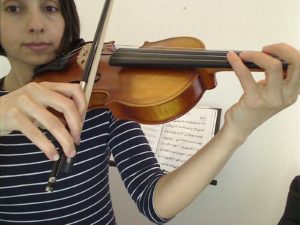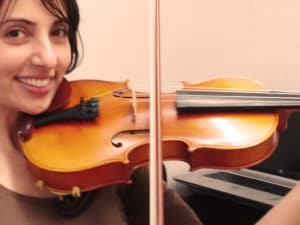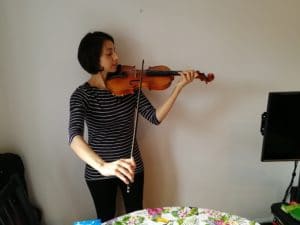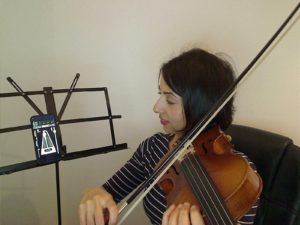Long Slow Bows are one of the best - and most straightforward! - techniques that you can use to warm up on the violin! They're also great for improving your bow technique.
Practising Long Slow Bows involves playing lots of up and down bows on your violin. But even though the task isn't complicated, there are lots of things you need to look out for ...

Here are some of the things you should check for when practising Long Slow Bows:
Posture - Is your body correctly positioned? Are all the elements of your body posture, your right arm and your left arm technique in the right place? (If you're not sure, use our '3 Important Checklists' to find out!)
Bow Control - Is the bow doing exactly what you want it to, and nothing else? Or does it have a life of its own? You need to make sure that the speed, weight and placement (position of the bow) are exactly how you want them to be!
Pure, Clean Sound - if you have good bow control, then you can create a beautiful, clear, vibrant and resonant sound. Listen closely to your sound production, and make sure there aren't any 'rough edges' to the sound.
Straight Bows - The bow needs to remain at right angles to the string as you play. This is what we call a 'straight' bow. If it doesn't remain straight, then the connection between the bow hair and the string will be disrupted, which will affect the sound you create.

Many people like to take a few minutes to play Long Slow Bows at the beginning of a violin practice session. It's a great way to get warmed up and ready to play - and it can be a useful way of 'clearing the mind' and focusing your awareness on your sound production.
It's a particularly good exercise because it's so simple... there aren't any other complicated techniques or musical demands filling up your brain, so you're free to focus on the sound, and the precision of your core bowing technique!

There are a few methods that you can introduce to your Long Slow Bow practice that will increase the effectiveness of what you do.
Play it SLOW! - This is sooooo important! Yes, the clue is in the name... it should be obvious! But it's easy to forget about bow speed after a few strokes, particularly if we're feeling enthusiastic and want to move quickly through our practice tasks.
But you need to stay disciplined and make sure that you take the time to play with a slow bow stroke. It's actually MORE challenging to play with a consistently beautiful sound at a slow tempo than at a fast tempo. So practising slowly is extremely helpful for the development and maintenance of your bowing technique.
Also, when you play slow, you have more TIME to consider the movements that you're making, and the sound that you're producing. This means you can listen in more detail to the resonance of the sound that you're producing, and make adjustments as you go along!
Play it IN TIME - It's one thing to get a technique working fluently, but it's another task altogether to make it work effectively in time with the music.
So once your Long Slow Bows are generating a consistently beautiful sound, you should try increasing the precision of your bow control by adding a regular beat.
A simple way to do this is to set a metronome at 60 beats per minute, and then making each Long Slow Bow last for four beats. That way you're using a quarter of the bow for each beat.
Once you've tried a few strokes like this, you'll feel how important it is to get the bow speed consistent, in order to stay correctly in time with the metronome. This will help to improve your co-ordination and the accuracy of your bowing.

Although it's important to have a good set of practice routines, you should change around your tasks from time to time. You don't want to get 'stuck in a rut' by doing the same things over and over again!
Be creative in your technical practice, especially if you want to develop as much flexibility as possible in your bowing.
There are SO many different ways you can practise Long Slow Bows, and you should feel free to invent different approaches and think of new ways to practise the exercises. Here are a few to get you started:
Please visit our sponsors:
London String School - Tuition for Adult Learners in London
MusicLand - Creative Music Products for Teachers and Learners
Please visit our sponsors:
FiddlerShop.com - Quality instruments at an affordable price
London String School - Tuition for Adult Learners in London
MusicLand - Creative Music Products for Teachers and Learners
